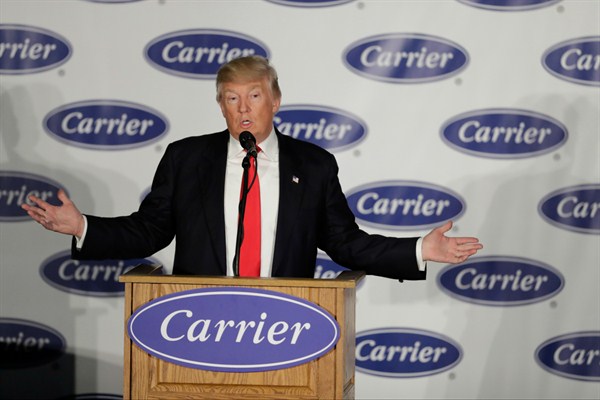When speculating about President-elect Donald Trump’s likely economic agenda, one must return to the popular view among many American voters that to create jobs and repair an ailing economy, turn to successful businessmen. Only they, not the professional political class, have the practical experience, instincts and strength needed to muster up better economic performance and job creation in areas like manufacturing. Why? Their business successes, according to this view, are easily transferable to solving a wide range of problems in the public sphere.
There is an element of truth here. Businessmen like Trump instinctively see the economy from a microeconomic perspective, where it is possible to achieve success through a focus on the wellbeing of individual firms or businesses. They see an underperforming national economy as simply a larger version of a failing firm. Their gut solution is to make the economy competitive again by cutting costs, whether lowering taxes or deregulating. To free up the needed resources for private sector expansion, they cut government expenditures in areas that aren’t essential for the private business sector.
These moves make up the core elements of supply-side economics. Although Trump has never used the phrase “supply-side,” his campaign promises and public statements centering on huge tax cuts show him partial to such Reagan-era policies. With his proposed increases in defense spending, his policies resemble Reaganomics—a commitment confirmed by his early Cabinet appointments.

